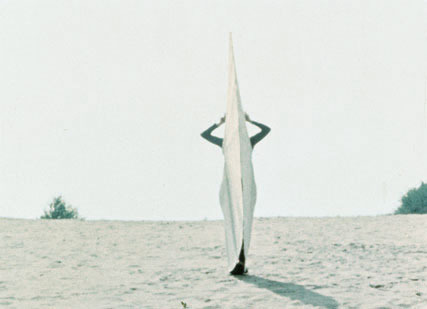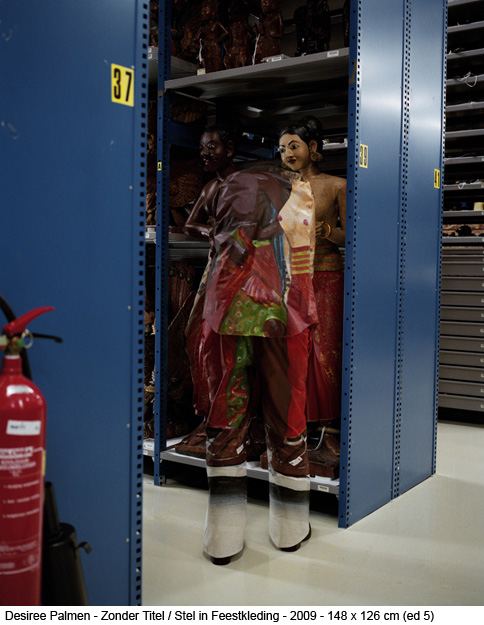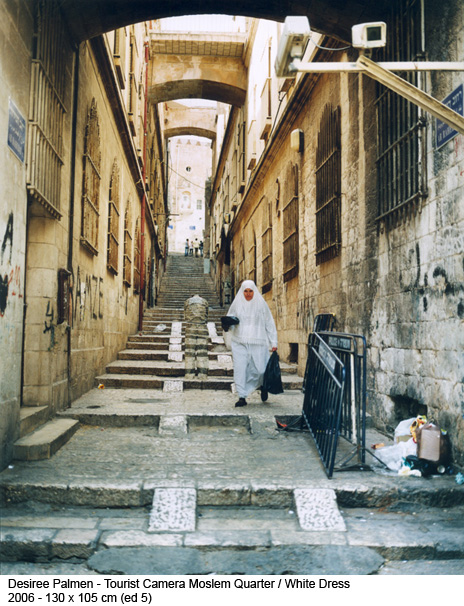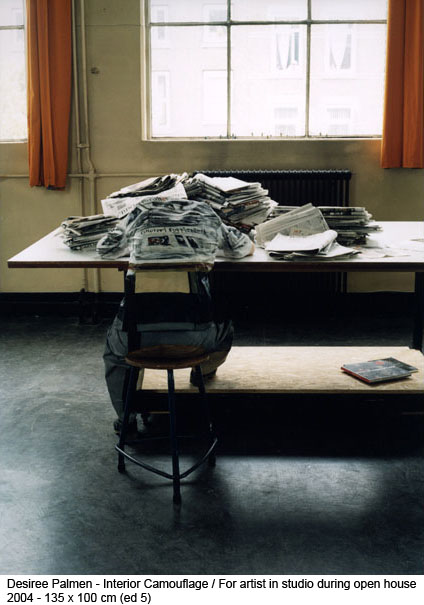"In addition to clarifying ownership of people and possessions, people jealously guard the space that immediately surrounds them. Humans create an invisible bubble around themselves in which they function. Placing objects between yourself and others, spreading your arms across your desk, and wrapping your arms around yourself are ways of guarding your personal space.
In normal circumstances, most people respect one another's personal territory. Sometimes, however, space invasion is unavoidable. When an invasion of your space occurs, you feel uncomfortable. Another person entering your space can penetrate your guard. Even when a persons space is invaded, they still find ways to limit the invasion as much as possible."
Monday, 28 May 2012
Ruvanti

How does
the vulnerable human body experience the hard reality of steel and the physical
power and the violence of the industrial machine ? What does the body feel
inside the stressed, nervous industrial space ? The human body is connected to
the body of the earth and alienates inside the industrial space. The human body
feels by his nervous system. Copper is the nervous system of the earth. The
performance "Body - Nervous System - Steel" consists of two parts.
In the first
part the students are tied up to the machines of a steelplant while it is
working. They are dressed in yellow ( nervous colour ) and are using copper wire
( nervous system ). While interfering in a symbolic way in the production
process they feel the force, hardness, violence and weight of the steel and the
machine.
During the second part four students are sitting motionless under a
yellow cloth facing each other before a life audience in the hall of the
steelplant. Only their heads are visible and motionless for the public eyes. The
yellow cloth stands for nervous system. Their heads are enlarged by copper
coloured hats. The form of the hats refer to the inquisition hats worn by
heretics. The students are sitting between two videoscreens showing images of
the first part. During the performance the students try to feel the vibrations
connected to the industrial space. Under the cloth, invisible for the public,
they write down their feelings.
Proxemics
Proxemics is a type of non-verbal communication. It can be described as "the interrelated observations and theories of man’s use of space as a specialized elaboration of culture".
Communicating by gesture, touch, body languge, eye contact and facial expressions- they are used to send and recieve messages between people.
Proxemics is also about the space between the sender, and how the receiver of a message influences the way the message is interpreted. There are said to be four types of 'torritory' assosiated with proxemics:
Communicating by gesture, touch, body languge, eye contact and facial expressions- they are used to send and recieve messages between people.
Proxemics is also about the space between the sender, and how the receiver of a message influences the way the message is interpreted. There are said to be four types of 'torritory' assosiated with proxemics:
- Primary territory: This refers to an area that is associated with someone who has exclusive use of it. An example is a house that others cannot enter without the owner’s permission.
- Secondary territory: Unlike primary territory, there is no “right” to occupancy of secondary territory, but people may still feel some degree of ownership of such space as they develop the custom of occupying it. For example, someone may sit in the same seat in church every week and feel irritated if someone else sits there.
- Public territory: this refers to an area that is available to all, but only for a set period, such as a parking space or a seat in a library. Although people have only a limited claim over that space, they often extend that claim. For example, it was found that people take longer to leave a parking space when someone is waiting to take that space.
- Interaction territory: this is space held by others when they are interacting. For example, when a group is talking to each other on a footpath, others will walk around the group rather than disturb their interaction territory.
Pebble Dashing
Roughcast or pebbledash is a coarse plaster surface used on outside walls that consists of lime and sometimes cement mixed with sand, small gravel, and often pebbles or shells. The materials are mixed into a slurry and are then thrown at the working surface with a trowel or scoop. The idea is to maintain an even spread, free from lumps, ridges or runs and without missing any background.
Roughcasting incorporates the stones in the mix whereas pebbledashing adds them on top.
Thursday, 24 May 2012
The best way to start is by painting a base coat that will be your brick mortar color. That's the lines between the bricks. Next you will tape off your brick pattern. Using 3/4 inch blue tape, you'll line off what will end up being your mortar lines.
After you've taped off the wall, you can paint the main color of your brick over the wall and the taped mortar lines. Usually if your brick sample is primarily red, this is the color you'll paint solid first.
Next, if you are using other colors to create more realism, you can mix your other colors individually in glaze.
I have found that a sponge is the best tool to apply the additional colors. A tip for applying additional colors is that I try to build up the colors from the most to the least.
For example, if the brick is mainly red, that is the solid base. If you see more black or brown as the next primary color, that should go on next using the sponge to allow plenty of red to show through. Then let's say you notice a little white or yellow, just apply a little of this glaze with your sponge just as a highlight.
After you've taped off the wall, you can paint the main color of your brick over the wall and the taped mortar lines. Usually if your brick sample is primarily red, this is the color you'll paint solid first.
Next, if you are using other colors to create more realism, you can mix your other colors individually in glaze.
I have found that a sponge is the best tool to apply the additional colors. A tip for applying additional colors is that I try to build up the colors from the most to the least.
For example, if the brick is mainly red, that is the solid base. If you see more black or brown as the next primary color, that should go on next using the sponge to allow plenty of red to show through. Then let's say you notice a little white or yellow, just apply a little of this glaze with your sponge just as a highlight.
Monday, 21 May 2012
Camouflage into environment
Tried to camouflage into the environment using material and lino with patterns that would be present originally.
Found some material in the textiles room which i wrapped around myself and took photographs on a timer. This helped me to work out what positions look good and how the material is wrapped. I found that this work linked well with Grace Ndiritu.
I also found some wood/ lino that i thought would good good against the shed. At first I wrapped it around me and it wasnt flexible enough, so it looked silly. I then held it vertically infront of me which worked very well. I tried to show parts of my body to show that there was a person behind.
Sunday, 20 May 2012
Forniphilia
"The act of turning a woman into nothing more than a piece of functional furniture is the ultimate goal for many bondage enthusiast. Often completely immobile the woman finds that she is at least useful to her owner, perhaps performing the role of a table, chair or even hatstand."

Alan Jones
http://www.forniphilia.info/articles/2/forniphilia-the-art-of-human-furniture

Alan Jones
http://www.forniphilia.info/articles/2/forniphilia-the-art-of-human-furniture
Saturday, 19 May 2012
Rebecca Horn
Weisser Körperfächer (White Body Compartments), 1972
The white fabric fans help to hide the body against the pale backgrounds.



Paradieswitwe (Paradise Widow), 1975
The body is hidden by a 240cm high instrument with internal wing braces that are matched to a woman's figure. Unable to see the figure for the covering, the only reason we know there is a body is due to the positioning of a mirror behind the piece.The mechanism can be moved to reveal parts of the body.

Im Dreieck (In The Triangle), 1973
Unable to find photographs...
The white fabric fans help to hide the body against the pale backgrounds.
In contrast to this, the clothing the person is actually wearing is black- exposing the body when the fans are slightly shifted.



Paradieswitwe (Paradise Widow), 1975
The body is hidden by a 240cm high instrument with internal wing braces that are matched to a woman's figure. Unable to see the figure for the covering, the only reason we know there is a body is due to the positioning of a mirror behind the piece.The mechanism can be moved to reveal parts of the body.

Im Dreieck (In The Triangle), 1973
Unable to find photographs...
Wednesday, 16 May 2012
Tuesday, 15 May 2012
Thursday, 10 May 2012
10/05/12
Making 'viels' from material and plaster cast to create wearable sculpture.
I am going to attach materials from different environments onto the veils so that it is also camouflage which links into my previous work with paint etc.
As well as the final photographs being displayed in the exhibition, I can include my veils which will add an extra aspect.
I am going to attach materials from different environments onto the veils so that it is also camouflage which links into my previous work with paint etc.
As well as the final photographs being displayed in the exhibition, I can include my veils which will add an extra aspect.
FMP
SECTION ONE
– Your Final Major Project
‘Covering the Body’ is about the body, the way it can be
used to communicate with an audience and how it can be hidden or camouflaged.
In previous work, I have experimented with paint, food and
camouflage on the body. I would like to broaden my knowledge and understanding
by researching traditional or religious coverings such as a veil, alongside
artists who explore the body and coverings in their work.
I want to learn more about the history of these cultures
so that they can influence the style of my work and the way in which they can
be viewed.
I am going to construct a series of wearable sculptures
that highlight the link between people, their environment and their culture.
I would also like to focus on photography as part of my
project as I find it very interesting. As well as this, I want to make
coverings from found materials relating to the environments they were taken
from.
SECTION
TWO – Influences, Research, Sources and Ideas
I am basing this project on my previous work, therefore I
have already researched into artists who have used coverings on the body, for
example, Boo Ritzen uses the body to paint on so that it is aesthetically
pleasing, whereas Ana Mendieta uses her own body with an environment to outline
political issues. I am planning trips to various galleries/museums such as The
Imperial War Museum and the Manchester Art Gallery to help me research the
reasons why artists have used coverings to hide the body. I will also be able
to find information on the internet and also my local library will have many
books that will help me.
I would like to research body language, proxemics and
artists that use coverings/materials on the body.
All
my research will be on my Blog.
SECTION THREE – Techniques, Processes and Timescale
I have constructed a plan for the upcoming eight weeks that
will allow me the time to research, experiment and finalise my project.
I want to work with such materials as paper and wire, as
well as natural matter.
After researching coverings, I am going to construct my own out
of various materials that are specific to an environment. These ‘coverings’ can
be worn but will also be a working sculpture which could also be included in
the exhibition.
When I have constructed my coverings, I want to take
photographs of a person draped in the covering in the original location. The
idea behind this is that the covering will be modified so that it replicates
the specific area it is placed in, to create a camouflage effect.
SECTION FOUR –
Method of Evaluation
I will receive a
peer review through discussions and group critique. This will help me a lot
because they are involved with both similar and different work as me, so I will
be able to get a lot of varied feedback. I will also complete an ongoing
reflective practice log.
Tutor feedback will also help me as it will be
another point of view I can work with.Joana Cifre Cerdà
Wool Over My Eyes
http://www.joanacifrecerda.com/page21.html
Home (Bitter) Sweet Home
http://www.joanacifrecerda.com/page22.html
http://www.joanacifrecerda.com/page21.html
Home (Bitter) Sweet Home
http://www.joanacifrecerda.com/page22.html
Wednesday, 9 May 2012
Alexa Meade

"When photographed, the representational painting and the subject being referenced appear to be one and the same as the 3D space of her painted scenes becomes optically compressed into a 2D plane"
Links with Kindersley's work due to covering the face/body. The effect it has is amazing. Colourful paints are used. Confuses the reality by adding something surreal into a normal environment.
'Covering the Body'
New title for my FMP. Mainly want to use/hide faces in bust shots. I could make this work into something to do with identity, abuse, shame, anxiety, depression etc. The face is used to advertise merchandise and is always 'perfect'/ But what if the face was hidden? Hiding the face takes away identity and speech. After looking at some more artists, I have found some images of painted people and backgrounds so they look like a painting in a photograph, although when another person is placed in the same environment, the effect is very noticeable - but stills plays with your mind. The paint is still very much like Boo Ritsen - which I like. I haven't thought about painting the background as well as the body. I could look into that more... The effect would be really great. I don't know if that is what i want to do anymore........
Tuesday, 8 May 2012
08/05/12
I constructed a piece of material by placing lots of different materials and fabrics onto plain cotton and pinned it into a composition that I found pleasing. I tried to find materials that had a lot of texture and patterns. Then i sewed them together on the sewing machine using a free machining foot. I tried to create a lot of texture and movement by adding different shapes to it and also going over patterns that were already on the fabrics to exaggerate the patterns.
Covering with mask
When looking round the studio, I found an old hairdressing head. I cut the rubber mask off and was unsure what I wanted to do with it. Then I remembered Gillian Wearing's 'Self Portrait at Three Years Old'. I experimented with the mask and the background of my photographs. I found the paint studio a little cluttered so I hung some black fabric and placed a light on one side. But using the macro setting on the camera, I was able to take some very interesting shots close up. I wanted to get the detail around the eyes to make the mask more apparent.
I am very happy with these photographs but I am unable to see how I would fit this style into my work.
Thursday, 3 May 2012
Richard Burbridge
I came across Richard Burbridge, a fashion photographer whilst searching for masked faces in photography.
The bellow images are from a shoot for a Swedish magazine.
I love the contrasts between the soft, smooth skins and the rough edges of the props.
Tuesday, 1 May 2012
01/05/12
After looking as Roger Ballen, I want to create a range of masks or coverings that go over the face. This will stop eye contact and make the viewer feel uneasy.
Going to experiment with materials to make masks. Layering fabric will be a starting point as I feel it will give me a great intricate texture. I also want to work with wire.
Going to experiment with materials to make masks. Layering fabric will be a starting point as I feel it will give me a great intricate texture. I also want to work with wire.
Subscribe to:
Comments (Atom)




















.JPG)
.JPG)



